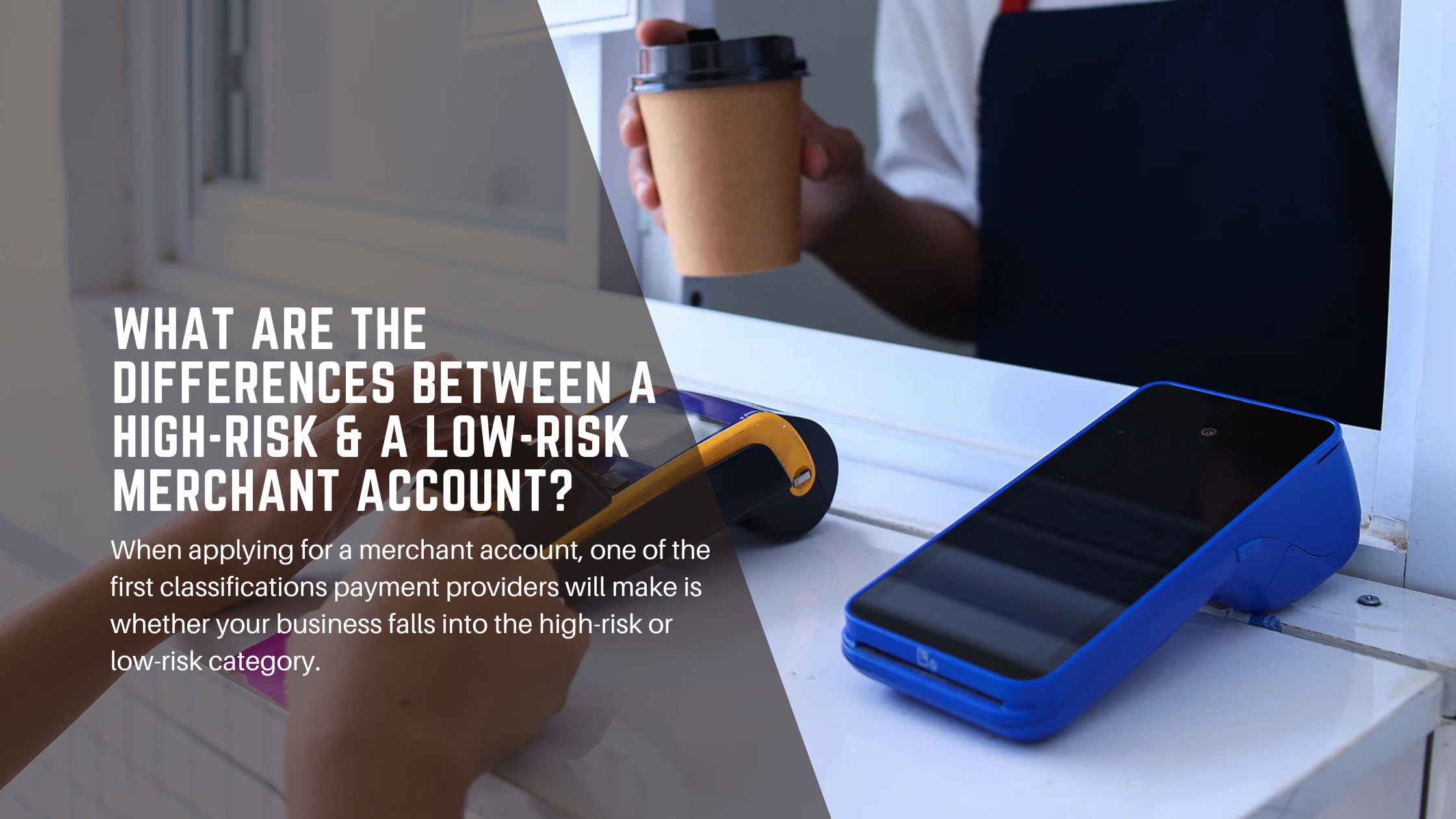December 4, 2025

-
Written by: Merchant Connect UK
- April 30, 2025
When applying for a merchant account, one of the first classifications payment providers will make is whether your business falls into the high-risk or low-risk category. This distinction plays a major role in determining approval rates, processing fees, reserve requirements, and even long-term payment processing stability.
Understanding the key differences between high-risk and low-risk merchant accounts is essential if you’re looking to set up reliable card processing for your business.
What is a Low-Risk Merchant Account?
A low-risk merchant account is typically granted to businesses that present minimal risk to the payment provider. This means they have low chargeback rates, stable revenue, and operate in industries deemed “safe” by banks and acquirers.
Common Traits of Low-Risk Merchants:
Operate in low-risk industries such as retail clothing, books, or home goods
Sell in only one currency (usually GBP, USD, or EUR)
Monthly revenue is typically under £15,000
Average transaction value is below £50
The business has been established for multiple years
Chargebacks and fraud rates are extremely low or non-existent
Use of 3D Secure technology to prevent fraud
Because of these factors, low-risk businesses benefit from lower processing fees, easier approvals, and minimal contract obligations.
What is a High-Risk Merchant Account?
A high-risk merchant account, on the other hand, is reserved for businesses considered to pose greater financial risk to acquiring banks. This may be due to the industry type, sales volume, high average transaction values, or a history of chargebacks and fraud.
Typical Indicators of High-Risk Merchants:
Accept multiple currencies and sell internationally
Are new businesses or have little to no trading history
Operate in high-risk industries such as online gambling, adult entertainment, debt collection, CBD, forex, or crypto
Have a poor credit history or show signs of financial instability
Experience frequent chargebacks or fraud
Monthly turnover exceeds £15,000
Average transaction amounts are typically over £50
Because of these risks, high-risk merchants often face higher transaction fees, rolling reserves, longer onboarding, and tighter compliance requirements.
Why Does the Classification Matter?
Whether you’re high-risk or low-risk determines:
Which payment providers will accept you
How much you’ll pay in processing fees
The fraud tools and chargeback protections you need
Your onboarding experience and underwriting process
High-risk merchants are more likely to be declined by traditional banks or face sudden account freezes without warning. That’s why it’s crucial for high-risk businesses to work with specialist providers who understand the complexities of their industry.
Need a High-Risk Merchant Account? Let Us Help.
At Merchant Connect, we specialise in helping high-risk businesses—particularly in industries like gambling, crypto, adult, and more—access reliable card processing and secure payment gateways.
We work with a global network of acquiring banks and offer tailored payment solutions to match your business needs.
Contact us today to find out how we can support your high-risk business with the right merchant account.
Categories
- Banking(14)
- Industry Insights(37)
- Merchant Account(8)
- Online Payments(20)
Recent Post
November 24, 2025
Best Payment Gateway for High-Risk Startups: 2025 UK Guide
November 11, 2025
How AI Is Reducing Fraud in High-Risk Payment Processing
October 26, 2025
